As the kitchenware industry continues to evolve, the demand for high-quality and ethically produced products has never been greater. With a focus on sustainability and responsible manufacturing, the role of factories audited by the Business Social Compliance Initiative (BSCI) is becoming increasingly significant. This article explores the impact of BSCI certification on the kitchenware market, highlighting trends in Europe and the US, and providing insights into the challenges and opportunities faced by exporters. Join us as we delve into the future of kitchenware, shaped by the standards set by BSCI audited factories.
Understanding the BSCI Audited Factory Concept
The term “BSCI audited factory” might sound like a jargon to someone unfamiliar with the kitchenware industry, but for those in the know, it’s a vital aspect of quality assurance and ethical manufacturing. BSCI, or the Business Social Compliance Initiative, is an independent initiative founded in 2003 to help companies throughout the world to improve working conditions in factories. Let’s delve into what it means for a kitchenware factory to be BSCI audited.
At its core, a BSCI audited factory is one that has undergone a thorough evaluation to ensure compliance with ethical labor standards, human rights, and environmental sustainability. This certification is not just about meeting legal requirements but also about upholding a set of principles that promote fair labor practices and safe working conditions.
The audit process involves a comprehensive review of the factory’s operations, from recruitment and hiring to working hours, wages, and health and safety measures. It’s a multi-step process that includes:
- Pre-Assessment: This stage involves gathering information about the factory’s operations and identifying potential risks.
- Audit: A team of independent auditors conducts a detailed inspection of the factory, interviewing workers, and examining documentation.
- Improvement Plan: If any non-compliances are found, the factory is given a set of recommendations to address these issues.
- Follow-Up: The factory is re-audited to ensure that the necessary improvements have been made.
One of the key aspects of the BSCI audit is the focus on social compliance. This means that the factory must adhere to international labor standards, which include:
- Freedom of Association: Workers have the right to form and join trade unions and to bargain collectively.
- No Child Labor: The factory must not employ children under the age of 15 (or 14 in some countries where the legal age is lower).
- No Forced Labor: Workers should not be forced to work against their will.
- Safe Working Conditions: The factory must provide a safe working environment with adequate health and safety measures.
In the kitchenware industry, where precision and durability are paramount, the quality of manufacturing is as important as ethical practices. BSCI audited factories understand this and strive to maintain high standards in their production processes. This includes:
- Quality Control: Regular checks to ensure that products meet the required specifications.
- Sustainability: Using environmentally friendly materials and practices to reduce the factory’s carbon footprint.
- Training: Providing ongoing training for employees to improve their skills and knowledge.
The BSCI certification is not just a stamp of approval for the factory; it’s also a signal to consumers that the kitchenware they are purchasing is produced in a socially responsible manner. For consumers who are increasingly conscious of where their products come from and how they are made, this certification can be a deciding factor.
In the European and American markets, where consumers are particularly concerned about ethical sourcing, a BSCI audited factory is seen as a reliable partner. These markets demand transparency and accountability, and the BSCI certification provides that assurance.
For kitchenware manufacturers looking to enter these markets, having a BSCI audited factory is not just an option; it’s often a necessity. It’s a way to differentiate their products from competitors and to build trust with retailers and consumers.
In conclusion, the BSCI audited factory concept is a testament to the commitment of kitchenware manufacturers to ethical business practices. It’s a way to ensure that workers are treated fairly, that the environment is respected, and that products are of the highest quality. As the kitchenware industry continues to grow, the BSCI audited factory will likely become an even more important part of the supply chain.
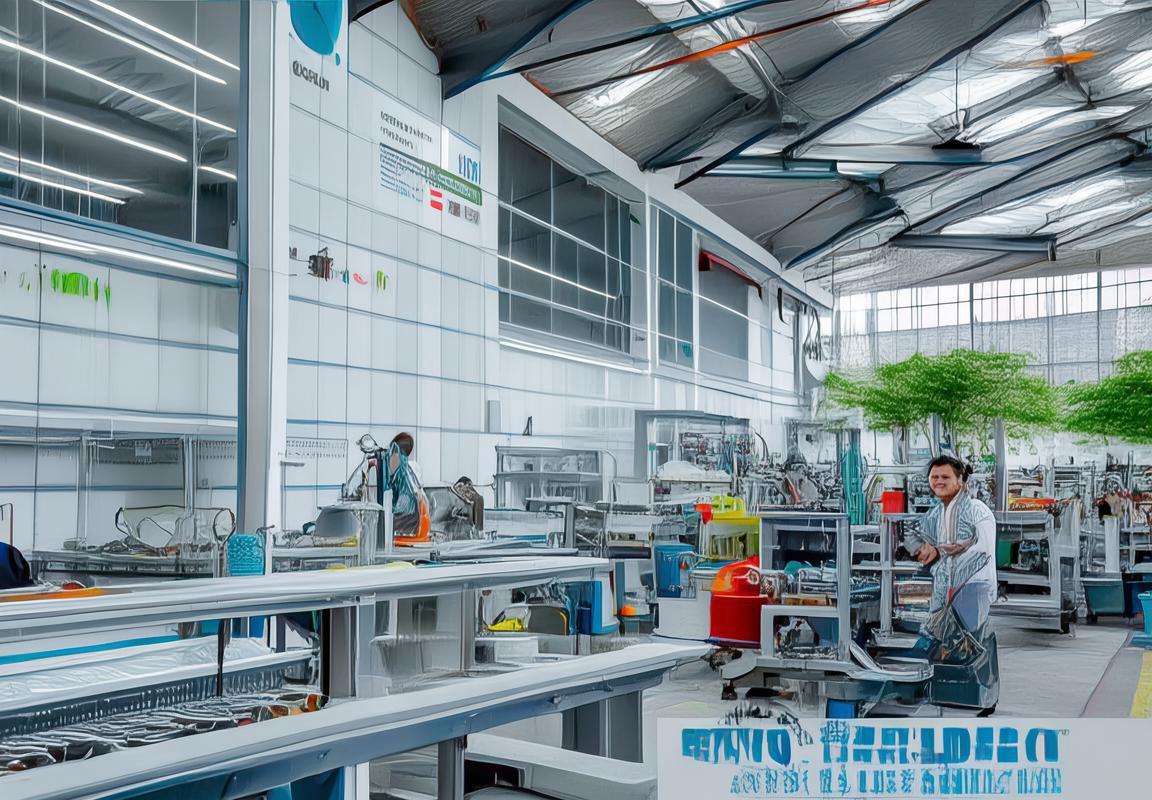
The Significance of BSCI Certification in Kitchenware Manufacturing
The BSCI certification, or Business Social Compliance Initiative, holds a pivotal role in the kitchenware manufacturing industry. This initiative is not just a standard; it’s a commitment to ethical business practices and social responsibility. Here’s how BSCI certification significantly impacts the sector:
-
Ethical Manufacturing Standards: BSCI certification ensures that kitchenware manufacturers adhere to ethical labor practices. This includes fair wages, safe working conditions, and the prohibition of child labor and forced labor. For consumers, this means they can trust that the products they purchase are made without compromising human rights.
-
Quality Assurance: The certification process involves rigorous checks on the quality of production. This is crucial in the kitchenware industry, where products are often used for daily cooking and require durability and safety. BSCI audits help manufacturers maintain high-quality standards, which in turn builds trust with consumers.
-
Reduced Risk of Supply Chain Issues: With the volatility of global supply chains, having BSCI certification can mitigate risks. It shows that a manufacturer has a structured approach to identifying and mitigating social risks throughout its supply chain, which is particularly important in the kitchenware sector where product recalls can have severe financial and reputational consequences.
-
Enhanced Brand Reputation: Brands that are BSCI certified are seen as more responsible and reliable. This can be a significant competitive advantage in a market where consumers are increasingly concerned about the ethical impact of their purchases. A positive brand reputation can lead to increased sales and customer loyalty.
-
Global Market Access: In many cases, BSCI certification is a requirement for market access. European and American markets, in particular, have stringent regulations regarding the ethical production of goods. Having BSCI certification can open doors to these markets, ensuring that manufacturers can expand their reach and grow their business.
-
Continuous Improvement: BSCI encourages continuous improvement in social compliance. Manufacturers are required to set objectives and targets for improving working conditions and labor practices. This focus on ongoing improvement can lead to better products and processes, benefiting both the company and its workers.
-
Training and Capacity Building: BSCI involves training programs for factory workers, helping to enhance their knowledge of labor rights and workplace safety. In the kitchenware industry, where precision and skill are often required, well-trained workers can lead to higher quality products.
-
Transparency and Accountability: The certification process demands transparency in the supply chain. Manufacturers must disclose information about their suppliers, which fosters accountability. This level of transparency can be a strong selling point for kitchenware brands looking to differentiate themselves in a crowded market.
-
Consumer Trust: In an era where consumers are more informed and conscious of where their products come from, BSCI certification can be a trust signal. It reassures customers that the kitchenware they purchase is not only of high quality but also produced in a way that respects human rights and the environment.
-
Cost Management: While achieving BSCI certification can involve additional costs, it can also lead to long-term cost savings. By preventing accidents, reducing turnover, and improving overall efficiency, manufacturers can lower their operational costs and improve their bottom line.
In conclusion, BSCI certification is not just a regulatory checkbox for kitchenware manufacturers; it’s a comprehensive framework that promotes ethical practices, enhances brand reputation, and fosters sustainable business growth. For those in the industry, embracing BSCI certification is not just a compliance exercise but a strategic move towards building a more responsible and resilient business.
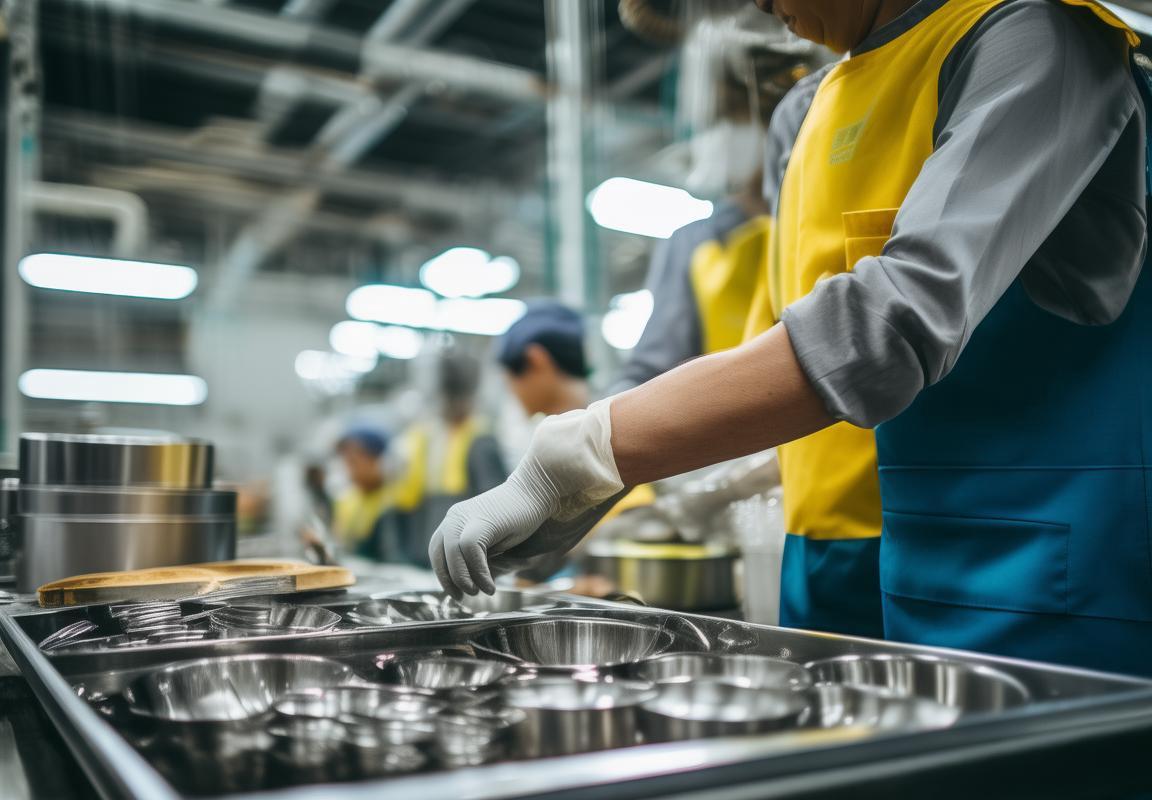
The European and American Kitchenware Markets: A Brief Overview
The European kitchenware market is a vibrant and diverse sector, reflecting the continent’s rich culinary traditions and design sensibilities. From high-end cookware to everyday essentials, the market caters to a wide range of consumers. One notable trend is the growing preference for eco-friendly and sustainable products, which are increasingly popular among environmentally conscious shoppers. Stainless steel and ceramic items are particularly sought after, offering durability and a sleek, modern aesthetic. The market is also witnessing a surge in smart kitchen gadgets, as technology continues to merge with everyday cooking tools.
In the United States, the kitchenware market is vast and encompasses a broad spectrum of products, from traditional to cutting-edge. American consumers are known for their love of convenience and innovation, and this is reflected in the plethora of products designed to simplify cooking and enhance culinary experiences. Non-stick cookware remains a staple, but there’s a growing trend towards healthier cooking options, such as cast iron and ceramic cookware. The American market also places a strong emphasis on kitchen aesthetics, with a variety of colors and designs available to match any kitchen decor.
Both markets have distinct regional preferences. In Europe, for instance, Southern European countries like Italy and Spain often have a preference for colorful and ornate kitchenware, while Northern European countries like Sweden and Norway favor minimalist designs. The US market, on the other hand, is more uniform in its tastes, with a general preference for clean lines and functional designs.
The European and American kitchenware markets are also influenced by global trends. For example, the rise of fusion cooking has led to an increased interest in Asian-inspired kitchenware, such as woks and bamboo steamers. Additionally, the popularity of health and wellness has spurred a demand for kitchen gadgets that promote healthier eating habits, like spiralizers and air fryers.
In Europe, the kitchenware industry is highly competitive, with well-established brands like Zwilling J.A. Henckels, WMF, and Le Creuset holding significant market share. These brands are known for their high-quality products and are often associated with luxury and craftsmanship. The market is also home to numerous mid-range and budget brands that cater to a wide range of consumer needs.
In the United States, the kitchenware market is similarly competitive, with major players like KitchenAid, Cuisinart, and All-Clad leading the way. These brands are known for their innovative products and strong brand loyalty. The market is also characterized by a high level of innovation, with new products and technologies constantly being introduced to keep up with changing consumer preferences.
Another important aspect of both markets is the importance of online sales. In Europe, online kitchenware sales have been growing steadily, with consumers increasingly turning to e-commerce platforms for convenience and variety. Similarly, in the US, online sales have become a significant channel, with major retailers like Amazon and Wayfair offering a vast array of kitchenware products.
The European and American kitchenware markets are also subject to regulatory standards that ensure product safety and quality. In Europe, the General Product Safety Directive (GPSD) and the EU’s New Legislative Framework (NLF) regulate the production and sale of kitchenware. In the US, the Food and Drug Administration (FDA) oversees the safety of kitchenware, particularly cookware that comes into contact with food.
In conclusion, the European and American kitchenware markets are dynamic and diverse, with a range of products that cater to different consumer needs and preferences. Both markets are influenced by global trends, local customs, and regulatory requirements, making them complex but fascinating sectors within the broader consumer goods industry.
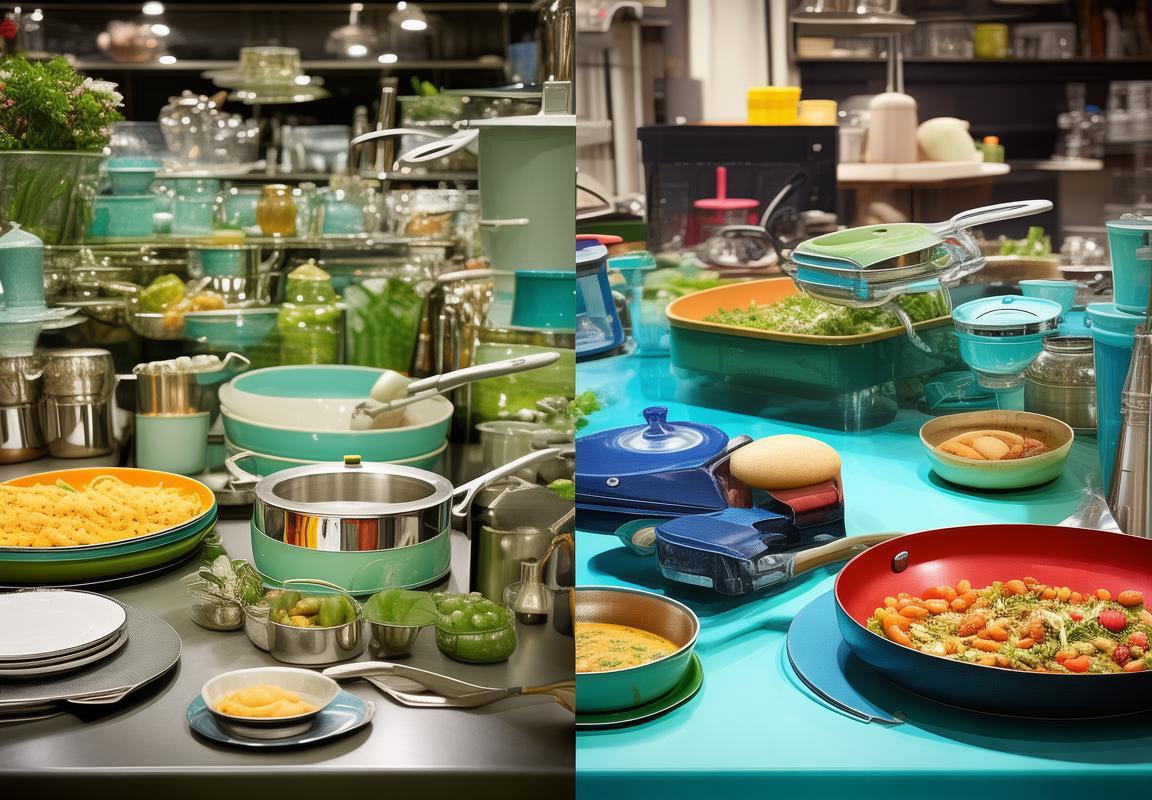
Quality and Compliance: The BSCI Audited Factory Advantage
In the competitive landscape of kitchenware manufacturing, the BSCI audited factory stands out as a beacon of quality and compliance. This certification is not just a label; it’s a promise to consumers and businesses alike that the products being produced meet stringent standards of ethical manufacturing and social responsibility. Let’s delve into the advantages that come with being a BSCI audited factory in the kitchenware industry.
The BSCI audited factory is known for its commitment to labor rights and environmental sustainability. These factories adhere to a code of conduct that goes beyond mere legal compliance, aiming to ensure that workers are treated fairly and that the production process minimizes its impact on the environment. This dual focus on labor and environmental standards is crucial in the kitchenware market, where the end products are used in homes and restaurants across the globe.
One of the key advantages of being BSCI certified is the assurance of quality control. The certification process involves rigorous assessments of the factory’s production processes, from raw material sourcing to final product assembly. This means that kitchenware products from BSCI audited factories are likely to be of higher quality, with fewer defects and a longer lifespan. Consumers, therefore, can trust that their purchases are not only stylish but also durable.
Compliance with BSCI standards also translates into a competitive edge for manufacturers. In the European and American markets, where consumer awareness and demand for ethical products are high, having the BSCI certification can be a significant differentiator. Retailers and distributors are increasingly looking for suppliers who can provide not just products but also a story of social responsibility. This narrative can open doors to new business opportunities and partnerships.
Moreover, the BSCI audited factory has a direct impact on the bottom line. By reducing the risk of labor disputes and ensuring that production processes are environmentally friendly, these factories can lower their operational costs in the long run. This efficiency is passed on to the consumer, making BSCI certified kitchenware more affordable without compromising on quality.
In terms of social compliance, BSCI audited factories must demonstrate fair wages, safe working conditions, and the absence of child labor. This not only upholds the dignity of the workforce but also contributes to a positive brand image. In the kitchenware industry, where the product is often a reflection of the brand’s values, this social responsibility is a crucial selling point.
The environmental aspect of BSCI certification is equally important. Kitchenware products are often made from materials that can have a significant impact on the environment. BSCI audited factories are required to manage their waste, use energy efficiently, and minimize the use of harmful chemicals. This not only protects the planet but also ensures that the kitchenware products are safe for consumers to use.
The certification also fosters a culture of continuous improvement within the factory. Regular audits and the need to meet BSCI standards encourage factories to innovate and find better ways to produce their products. This can lead to the development of new technologies and processes that are more sustainable and efficient.
In the realm of global trade, BSCI certification can also simplify the export process. Many retailers and buyers in Europe and the US have their own codes of conduct or expect their suppliers to comply with international standards. By having BSCI certification, kitchenware manufacturers can avoid the need for multiple audits and certifications, streamlining the supply chain and reducing costs.
Lastly, the BSCI audited factory advantage extends to the supply chain. By ensuring that all suppliers and business partners adhere to the same standards, these factories create a network of trust and reliability. This can lead to stronger relationships with suppliers, better pricing, and a more cohesive supply chain, which is essential in a market where just-in-time delivery is often the norm.
In conclusion, the BSCI audited factory advantage in the kitchenware industry is multifaceted. It encompasses quality assurance, compliance with ethical and environmental standards, cost efficiency, and a competitive edge in the global market. For manufacturers aiming to succeed in the European and American kitchenware markets, the BSCI certification is not just an option; it’s a strategic imperative.
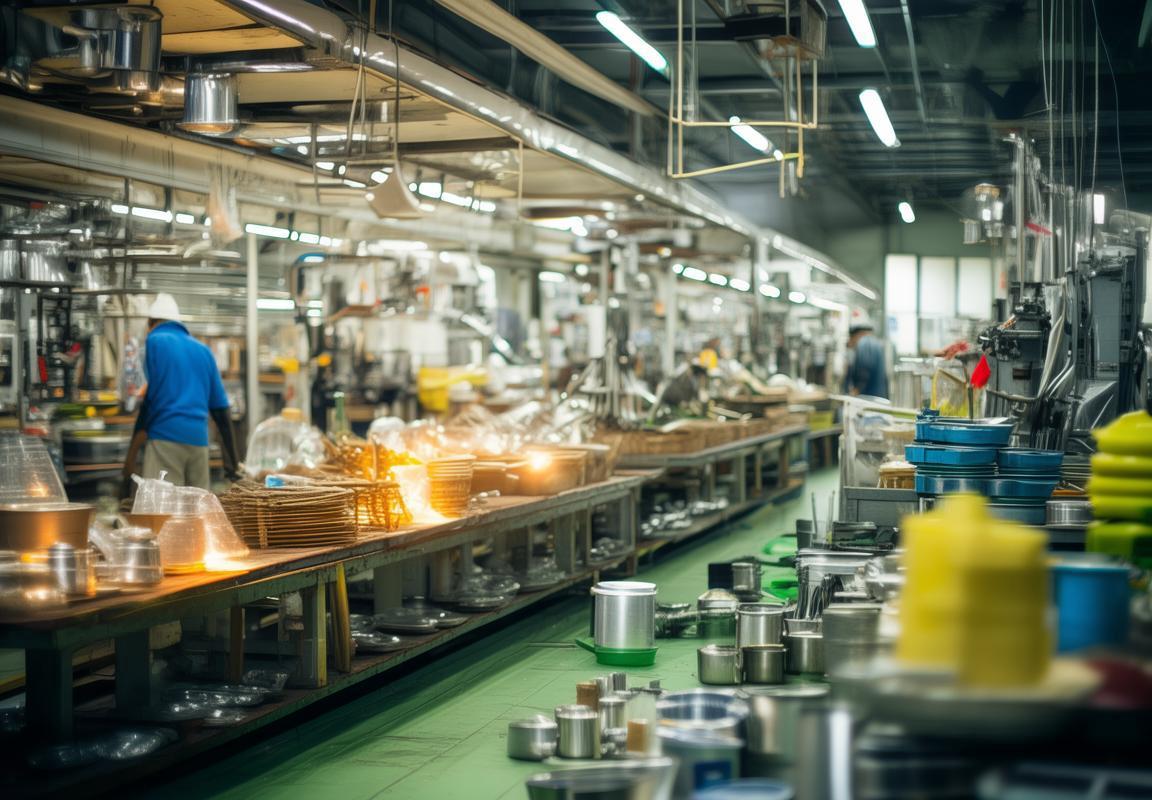
Innovations in Kitchenware: Trends in Europe and the US
In the ever-evolving world of kitchenware, innovation and design trends are shaping the way consumers interact with their cooking spaces. Across Europe and the United States, these markets are at the forefront of what’s new and exciting in the industry. Here’s a glimpse into the latest trends that are reshaping the kitchenware landscape.
Smart appliances are becoming increasingly popular, with a focus on connectivity and energy efficiency. From smart ovens that can be controlled via smartphone apps to refrigerators that track dietary needs, these innovations are not just about convenience but also about sustainability.
Sustainability is a key driver in kitchenware design, with a growing emphasis on eco-friendly materials. Recycled plastics, biodegradable materials, and sustainable sourcing are becoming standard practices. This shift is driven by consumer demand for greener options and a desire to reduce the environmental impact of kitchenware.
Functionality is being redefined with the integration of technology. Multi-purpose kitchen gadgets that combine traditional tasks with modern conveniences are gaining traction. Think of a blender that doubles as a food processor, or a saucepan that can be used as a slow cooker.
The minimalist aesthetic is still strong, with sleek designs and minimalistic color palettes dominating kitchenware collections. This trend reflects a broader move towards simplicity and uncluttered living spaces. It’s not just about the look; it’s about creating a kitchen environment that’s both beautiful and efficient.
European and American consumers are increasingly looking for kitchenware that can withstand the test of time. High-quality, durable materials like stainless steel, cast iron, and high-grade ceramics are favored for their longevity and ability to withstand the rigors of daily use.
Health and wellness are top priorities, and kitchenware is following suit. Non-stick coatings that are free from harmful chemicals, ceramic cookware that doesn’t leach toxins, and innovative cutting boards made from antibacterial materials are becoming more common.
The trend towards personalized and customizable kitchenware is on the rise. From cookware that can be engraved with names or initials to kitchen gadgets that come in a variety of colors and designs, consumers are seeking products that reflect their personal style.
Interactive kitchenware is also making waves, with digital scales that can track portion sizes and nutritional information, and cookbooks that can be downloaded onto smart devices. This merging of technology and kitchenware is enhancing the cooking experience by providing users with information and assistance at their fingertips.
In the realm of kitchenware, European and American markets are also seeing a rise in artisanal and handcrafted products. These items often come with a story, highlighting the craftsmanship and heritage behind each piece. It’s a nod to the past while embracing the modern kitchen.
Finally, there’s a growing movement towards smart kitchen systems that integrate various appliances to create a seamless cooking experience. These systems can optimize cooking times, energy usage, and even suggest recipes based on the ingredients available in the kitchen.
As the kitchenware industry continues to innovate, it’s clear that the future holds a blend of technology, sustainability, and personalization. These trends are not just about making cooking easier; they’re about creating a kitchen experience that is tailored to the individual, mindful of the environment, and reflective of current design sensibilities.

Consumer Demand and the Impact on Kitchenware Manufacturing
In the ever-evolving landscape of kitchenware manufacturing, consumer demand plays a pivotal role in shaping trends and driving innovation. The impact of these demands can be seen in the materials used, design aesthetics, and functionality of kitchenware products. Here’s a closer look at how consumer preferences are reshaping the industry.
The rise of eco-conscious consumers has led to a surge in demand for sustainable kitchenware. From bamboo cutting boards to stainless steel utensils that are free from harmful chemicals, manufacturers are responding by producing products that align with green living philosophies. This shift not only caters to a growing market segment but also positions brands as environmentally responsible.
Smart kitchen gadgets have become increasingly popular, driven by the tech-savvy consumer who seeks convenience and efficiency. Smart cookers, Bluetooth-enabled kitchen scales, and apps that guide users through recipes are just a few examples of how technology is merging with kitchenware. This integration not only simplifies cooking processes but also encourages users to experiment with new recipes and cooking techniques.
Health and wellness have become central themes in kitchenware design. With a focus on clean eating and home cooking, consumers are looking for non-toxic cookware options. Ceramic cookware, glass bakeware, and cast iron skillets that don’t leach chemicals into food are becoming more sought after. Additionally, the demand for kitchenware that aids in meal prep, such as food storage containers with airtight seals and portion control containers, reflects a trend towards healthier eating habits.
The convenience of single-use items has long been a staple in kitchenware, but there’s a growing movement towards reusable and durable alternatives. Reusable silicone spatulas, bamboo straws, and stainless steel water bottles are becoming more common, reflecting a desire to reduce waste and live a more sustainable lifestyle. This shift has prompted manufacturers to create products that are both practical and environmentally friendly.
Personalization has also made its way into kitchenware, with consumers seeking products that reflect their individual style. Customized kitchenware, such as engraved cutting boards or personalized cookware sets, offers a unique touch to kitchen decor. This trend is not only about aesthetics but also about the emotional connection consumers feel towards their kitchenware.
In the realm of kitchenware, the demand for versatility is undeniable. Multi-functional tools like all-in-one cookware sets, which can be used on various cooking surfaces and for multiple purposes, are gaining traction. Consumers are looking for products that can save space and reduce the number of items they need to keep in their kitchen cabinets.
The impact of consumer demand on kitchenware manufacturing extends beyond product design. It influences packaging, marketing strategies, and even the supply chain. For instance, the need for sustainable materials has led to partnerships with suppliers who can provide eco-friendly alternatives. Similarly, the demand for smart kitchen gadgets has spurred research and development in technology integration.
Moreover, the globalization of the kitchenware market has introduced a diverse range of products and styles. Consumers are now exposed to international designs, which can inspire local manufacturers to innovate and adapt to new trends. This cross-cultural exchange has enriched the kitchenware industry, offering consumers a wider array of choices.
In conclusion, consumer demand is a powerful force that drives the kitchenware manufacturing industry. From sustainability to technology, health consciousness to personalization, the industry is continually evolving to meet the needs and desires of its customers. As long as consumers continue to seek out innovative and high-quality products, the kitchenware market will continue to thrive.

Case Studies: Successful BSCI Audited Kitchenware Manufacturers
The kitchenware industry is a dynamic sector, with manufacturers constantly striving to meet the evolving demands of consumers. Among these players, there are several that have successfully achieved BSCI (Business Social Compliance Initiative) certification, a testament to their commitment to ethical manufacturing practices. Let’s delve into the stories of a few such successful BSCI audited kitchenware manufacturers.
In Germany, there’s a company known for its high-quality glassware. They’ve managed to blend traditional craftsmanship with modern technology, ensuring that their products not only look exquisite but also meet stringent safety standards. The BSCI certification has been pivotal in solidifying their reputation as a reliable and responsible manufacturer.
Similarly, in Italy, a leading brand of kitchen knives has made a name for itself through precision engineering and a focus on sustainable materials. Their BSCI audit not only confirmed their adherence to fair labor practices but also highlighted their efforts in reducing their carbon footprint through eco-friendly production methods.
In the United States, a manufacturer of ceramic cookware has turned heads with its innovative designs and eco-conscious production process. Their BSCI audit has not only improved their supply chain management but has also led to a more engaged and empowered workforce. This has translated into products that resonate with consumers who value both style and sustainability.
Another standout example comes from Japan, where a company specializing in high-tech kitchen appliances has leveraged BSCI certification to ensure that their cutting-edge products are produced with the utmost care for both workers and the environment. Their commitment to social compliance has not only boosted their brand image but has also opened doors to new markets.
In the Netherlands, a producer of kitchen gadgets and utensils has successfully used BSCI certification as a tool for continuous improvement. By addressing issues such as labor rights and health and safety, they’ve been able to create a more positive working environment. This has, in turn, led to increased employee satisfaction and a product line that reflects these values.
A notable case from the United Kingdom involves a brand that produces gourmet bakeware. Their BSCI audit has been instrumental in driving their ethical sourcing practices, ensuring that the raw materials used are obtained from suppliers who adhere to fair trade principles. This focus on transparency has built trust with consumers, who are increasingly looking for brands that align with their values.
These case studies illustrate the multifaceted benefits of BSCI certification for kitchenware manufacturers. From enhancing brand reputation to driving innovation, the certification process has had a significant impact on the industry.
In Germany, the glassware manufacturer has seen a direct correlation between their BSCI certification and increased market demand. Consumers are now more likely to choose their products over competitors, knowing that they are supporting a brand that values social responsibility.
The Italian knife brand has found that BSCI certification has not only helped them maintain their competitive edge but has also opened up opportunities for expansion into new markets. International buyers are more comfortable doing business with a company that has demonstrated its commitment to ethical manufacturing.
In the US, the ceramic cookware company has noticed a shift in consumer behavior, with a growing number of customers seeking out products that are both beautiful and sustainable. Their BSCI audit has played a crucial role in aligning their production processes with these consumer preferences.
The Japanese appliance manufacturer has capitalized on the global trend towards sustainability and ethical production. Their BSCI certification has become a key differentiator in a crowded market, allowing them to stand out to environmentally conscious consumers.
The Dutch kitchen gadget producer has seen a boost in employee morale and productivity, which has, in turn, improved the quality of their products. This has created a virtuous cycle where the company’s commitment to social compliance has enhanced its overall performance.
The gourmet bakeware brand from the UK has used their BSCI certification to build a loyal customer base that values transparency and ethical practices. This has not only increased sales but has also contributed to a positive brand image that attracts top talent.
These successful BSCI audited kitchenware manufacturers serve as examples of how ethical manufacturing can drive business success. Their stories highlight the importance of social compliance and the positive impact it can have on all aspects of a company’s operations.

Challenges and Opportunities for Kitchenware Exporters
Navigating the complexities of the global market, kitchenware exporters face a landscape filled with both challenges and opportunities. The rise of e-commerce, evolving consumer preferences, and stringent international standards have reshaped the industry. Let’s delve into the specifics of these dynamics.
The rapid growth of online retail platforms has opened new avenues for kitchenware exporters. Consumers now have access to a wider variety of products from around the world, making it easier for exporters to reach a broader audience. However, this expansion also means heightened competition, as local and international brands vie for the same market share.
Customization has become a key driver in the kitchenware industry. Consumers are no longer satisfied with standard, off-the-shelf items; they seek unique, personalized products that cater to their specific needs and tastes. This shift requires exporters to invest in research and development to create innovative designs and cater to niche markets.
Sustainability is a growing concern for consumers and retailers alike. As environmental consciousness increases, kitchenware exporters must adapt by offering eco-friendly products. This includes not only the materials used but also the manufacturing process, ensuring that the products are produced with minimal environmental impact.
Regulatory compliance is a significant challenge for kitchenware exporters, especially when dealing with international markets. Different countries have varying standards for safety, labeling, and certification. Staying abreast of these regulations and ensuring that all products meet the necessary criteria can be a daunting task. However, it also presents an opportunity to differentiate products by emphasizing compliance and quality.
The global economic climate can be volatile, affecting the purchasing power of consumers and the ability of exporters to secure contracts. Fluctuations in currency exchange rates can impact pricing and profitability. Despite these challenges, exporters can capitalize on opportunities by diversifying their customer base and exploring new markets.
The impact of technology cannot be overstated. Smart kitchen appliances and gadgets are becoming increasingly popular, and exporters must keep up with these trends to remain competitive. This requires not only adapting existing products but also investing in new technologies that can enhance the user experience.
Labor costs are another critical factor. In some regions, rising wages can erode profit margins. Exporters must find ways to optimize production processes and manage costs without compromising on quality. This might involve exploring alternative sourcing options or investing in automation.
Consumer behavior is also evolving. There’s a growing trend towards convenience and efficiency in kitchenware. This means that exporters need to focus on products that not only enhance functionality but also simplify everyday tasks. The ability to offer a comprehensive range of kitchen solutions can be a significant advantage.
Lastly, the importance of brand reputation cannot be underestimated. In an era where reviews and social media play a pivotal role in consumer decisions, exporters must work diligently to build and maintain a strong brand image. This involves everything from product design and quality to customer service and sustainability initiatives.
In conclusion, while the kitchenware export industry presents numerous challenges, it also offers a wealth of opportunities. By embracing innovation, sustainability, and compliance, and by understanding and adapting to changing consumer demands, exporters can navigate the global market with success.

Expert Insights: Predictions for the Future of Kitchenware in Europe and the US
In the ever-evolving landscape of kitchenware, experts weigh in on the future trends and challenges that will shape the industry in Europe and the US. From technological advancements to shifting consumer preferences, here’s a glimpse into what might lie ahead.
The integration of smart technology continues to be a major trend in kitchenware. Devices that offer connectivity, such as smart ovens and refrigerators, are becoming more common, reflecting a broader shift towards convenience and efficiency. Users are increasingly seeking kitchen appliances that can be controlled remotely, providing them with the ability to manage their meals from any location.
Environmental consciousness is another driving force. Kitchenware manufacturers are responding to the growing demand for sustainable and eco-friendly products. This includes the use of recycled materials, energy-efficient designs, and products that are biodegradable or recyclable at the end of their life cycle. The market is seeing a rise in bamboo, stainless steel, and ceramic items that cater to eco-conscious consumers.
Personalization is also on the rise, with consumers seeking products that reflect their individual tastes and lifestyles. Customizable kitchenware, from cookware sets with personalized names to unique designs and colors, is becoming more accessible. This trend is likely to continue as consumers look for ways to express their identity through the items they choose for their homes.
Health and wellness are central themes in kitchenware design. There’s a growing focus on non-toxic materials and cookware that promotes healthier cooking methods, such as ceramic cookware that doesn’t leach chemicals into food. Additionally, kitchen gadgets that aid in meal preparation, like air fryers and slow cookers, are becoming popular as they offer healthier alternatives to deep-frying and fast cooking.
In Europe, the market is influenced by stringent regulations and a strong emphasis on quality. Consumers in this region are known for their preference for high-end, durable kitchenware. Brands that can offer both quality and innovation are well-positioned to succeed. The rise of online marketplaces has also made it easier for European consumers to access a wider range of products from around the world.
The American kitchenware market, on the other hand, is characterized by its diverse consumer base and its love for convenience. The US market has seen a surge in the popularity of multi-functional appliances that cater to busy lifestyles. Brands that can offer innovative solutions to common kitchen challenges will likely find a receptive audience.
As for the US, the rise of the millennial and Gen Z consumer is reshaping the market. These demographics are more likely to seek out brands that align with their values, such as those that prioritize sustainability or offer community-driven initiatives. The rise of social media has also played a significant role in shaping consumer preferences, with influencers and bloggers often driving trends.
Despite these trends, there are challenges that kitchenware exporters must navigate. Global trade tensions and supply chain disruptions can impact pricing and availability. Additionally, the competitive landscape is fierce, with both established brands and emerging startups vying for market share.
In Europe, the challenge lies in balancing the need for innovation with the high standards of quality and safety that consumers expect. The market is also subject to strict regulations regarding food safety and environmental impact, which can be costly and time-consuming to comply with.
In the US, the challenge is often related to the rapid pace of technological advancements. Brands must constantly innovate to keep up with changing consumer needs and preferences. They also need to navigate a highly fragmented market, where consumers have a plethora of options at their fingertips.
Looking ahead, the future of kitchenware in Europe and the US will likely be defined by a combination of these factors. The industry will need to continue to innovate while also addressing the challenges of trade, sustainability, and consumer expectations. Those that can do so successfully will be well-positioned to lead the market in the coming years.
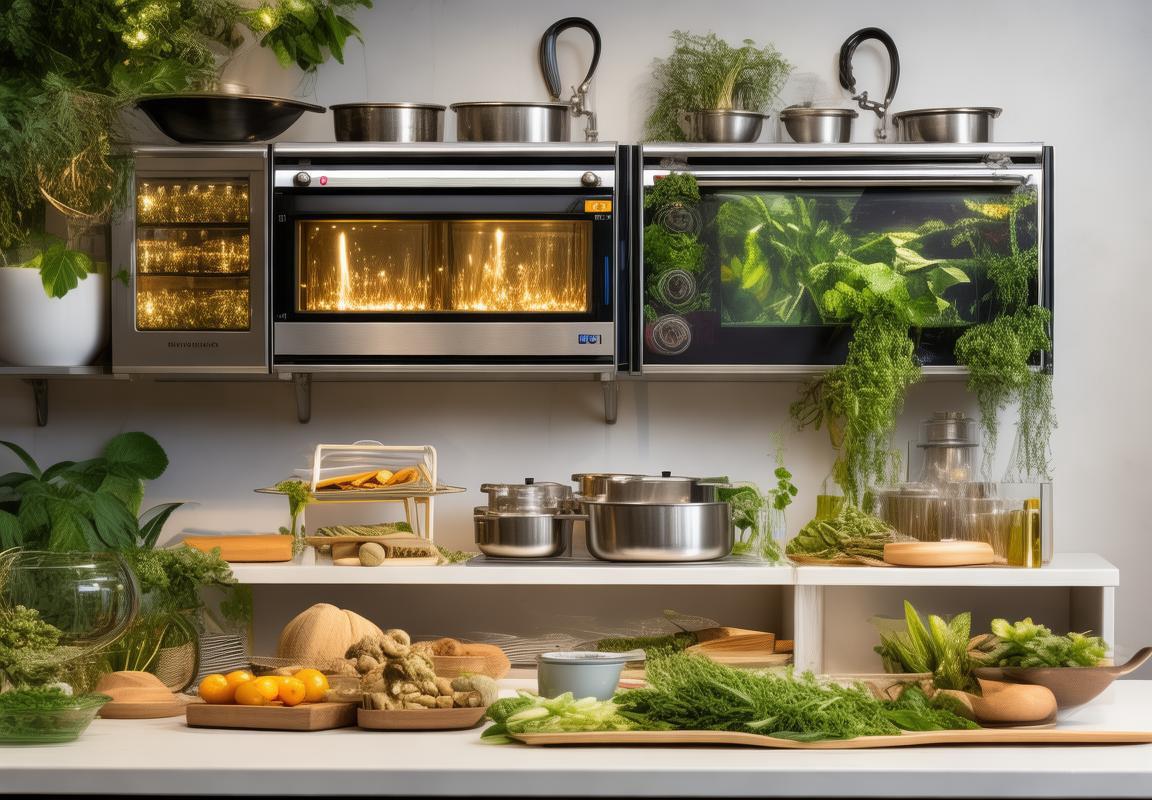
Conclusion: The Role of BSCI Audited Factories in Shaping the Kitchenware Industry
In the ever-evolving landscape of the kitchenware industry, BSCI audited factories have emerged as pivotal players, setting new standards for quality and ethical manufacturing. These factories, certified by the Business Social Compliance Initiative, have not only reshaped the industry’s reputation but have also become a beacon for innovation and sustainability. As we reflect on their role, it’s clear that BSCI audited factories have become integral to the future of kitchenware in Europe and the US.
Their impact is profound, influencing everything from design to distribution. These factories prioritize environmental responsibility, ensuring that their processes minimize waste and emissions. This commitment to sustainability has resonated with consumers, who are increasingly seeking eco-friendly products. The result? A market shift towards greener kitchenware solutions.
The role of BSCI audited factories in the kitchenware industry cannot be overstated. They have set a new benchmark for compliance, ensuring that every product leaving their facilities adheres to stringent social and environmental standards. This has not only elevated the quality of kitchenware products but has also created a more transparent supply chain, fostering trust between manufacturers, distributors, and consumers.
In Europe, where sustainability is a cornerstone of consumer values, BSCI audited factories have led the charge in creating kitchenware that is both functional and environmentally conscious. From bamboo cutting boards to energy-efficient appliances, these factories have been at the forefront of integrating eco-friendly materials and technologies into their products. The European market has responded favorably, with a growing number of consumers seeking out these sustainable options.
Similarly, in the US, BSCI audited factories have played a crucial role in driving innovation. The American consumer, known for their preference for high-quality and durable kitchenware, has been receptive to the advancements made by these factories. The introduction of smart kitchen gadgets and ergonomic designs has not only enhanced the user experience but has also extended the lifespan of kitchenware products, reducing waste.
The collaboration between BSCI audited factories and designers has also been instrumental in shaping the industry. These factories have become partners in creating unique and stylish kitchenware collections that cater to the evolving tastes of consumers. Whether it’s the latest in ceramic cookware or cutting-edge stainless steel appliances, these factories have the expertise to bring innovative designs to life.
The rise of online shopping has also been a game-changer for BSCI audited kitchenware factories. With the ability to reach a global audience, these factories have expanded their market reach and increased their visibility. The ease of online transactions has made it possible for consumers in remote areas to access high-quality, ethically produced kitchenware.
Despite the many successes, the road has not been without its challenges. The high standards set by BSCI certification can be demanding, requiring factories to invest in new technologies and training programs. However, these investments have paid off, as the factories have seen improvements in efficiency and customer satisfaction.
In conclusion, the role of BSCI audited factories in shaping the kitchenware industry is undeniable. They have redefined what it means to produce kitchenware by emphasizing quality, compliance, and sustainability. As the industry continues to grow and evolve, these factories are well-positioned to lead the way, ensuring that the future of kitchenware in Europe and the US is bright and responsible.